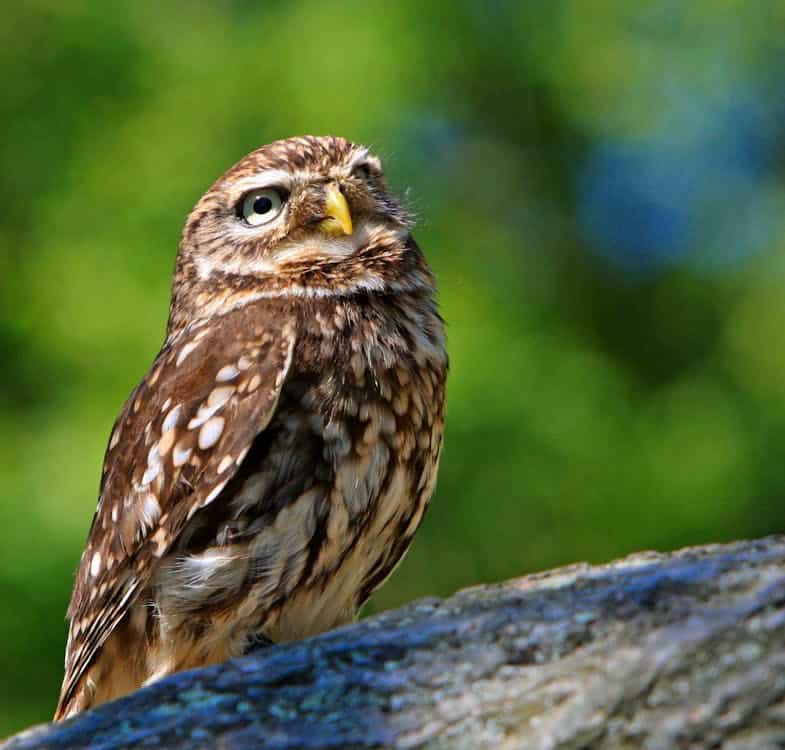I have lots of different wildlife living on my doorstep, visits from shrews, nesting buzzards, beetles, bats and all sorts of other wildlife frequenting my home. The loudest neighbours at the moment are the little owls!
Little owls are the smallest species of owl in the UK and live up to their name, standing at only 20cm in height with short tails and weighing in at around 180grams. They have a mottled cream and brown plumage and bright yellow eyes. While they can be spotted sunbathing during the day, they are most active at dawn and dusk, I especially hear them calling when I take my dog for a walk in the evenings. One of the alarm calls is a strange mewing sound with an upward inflection, but quite loud and unmistakably a little owl.

It is clear why they like the area as the large fields are home to many small rodents and invertebrates which make up the perfect diet for a little owl. They will spot them from a high up perch in the surrounding trees, swooping down to snatch them up with their beak or feet. They are also fond of earthworms, which they will walk around on the ground to search for.
If they find a nest site they like, they will return year after year in their monogamous pairs. They are very territorial, and the males are particularly noisy when establishing their territory in autumn and early spring. They remain with the same partner for life and make nests in small holes in trees and sometimes even use rabbit burrows. 2-5 eggs are laid and the male will stay on a nearby perch while the female is incubating the eggs during which he will bring her food. The young then fledge at around 5-6 weeks but are still dependent on the adults for another 2-4 weeks. They are considered adults at 6-7 months old and sexually mature at 1 year.
Although they are widespread in the UK now, they aren’t actually native and were introduced from the continent in the 1800’s. From then they spread across the country but have not had a detrimental impact on native species as they appear to have found an unoccupied niche. They are found across Europe, Asia and North Africa. The UK population is estimated to be 5,600 pairs, which is a decline on past numbers, however the extensive range of the birds leave them as least concern on the IUCN redlist.
Little owls have been spotted living around Wingham Wildlife Park and can be heard late evenings making their quirky calls.
If you can hear owl calls but not sure of the species, there are various sites you can use to help you identify owls such as:
barnowltrust.org
the British trust for ornithology (bto.org)
rspb.org
Thank you for reading and happy owl-spotting!


